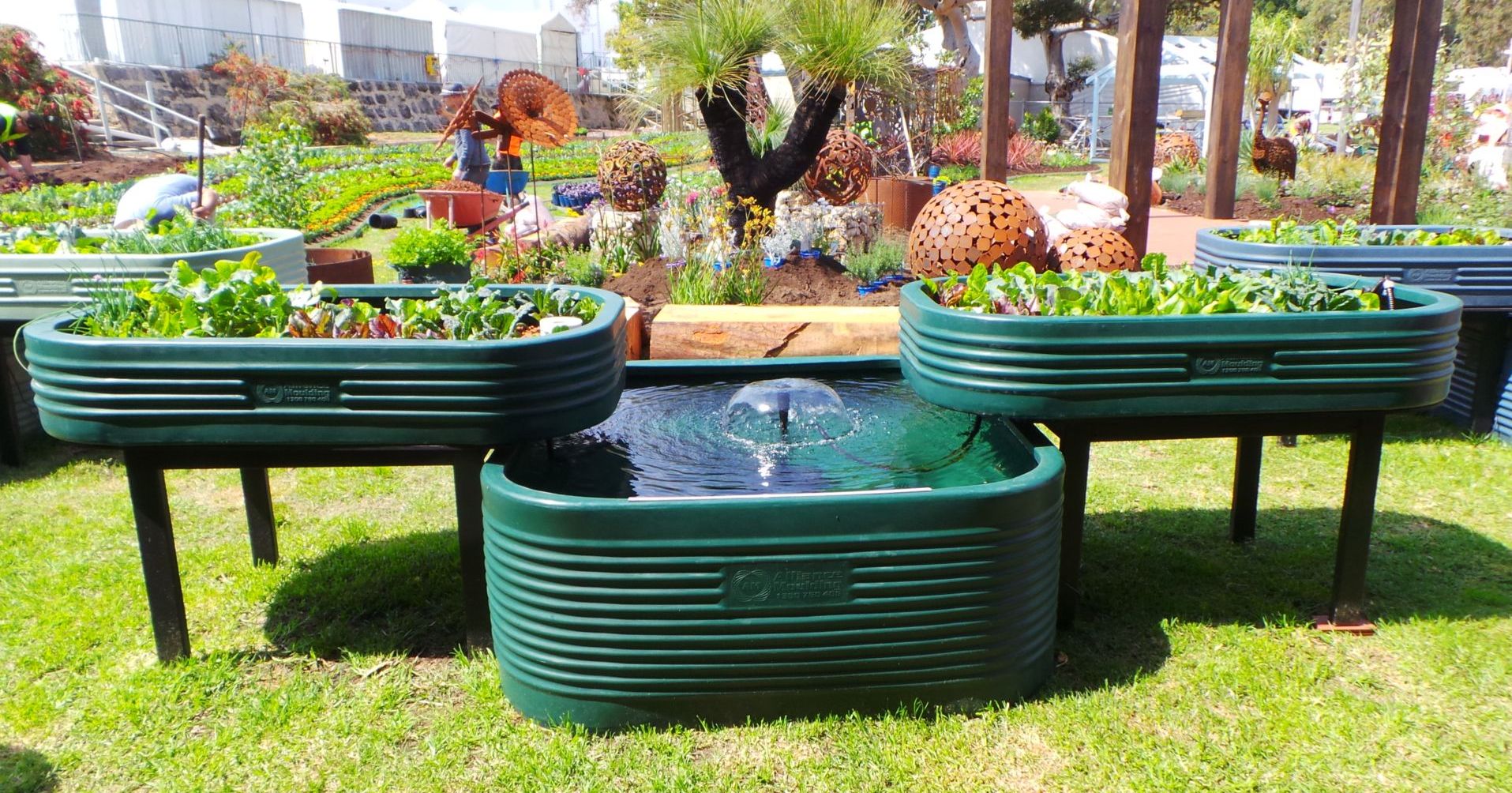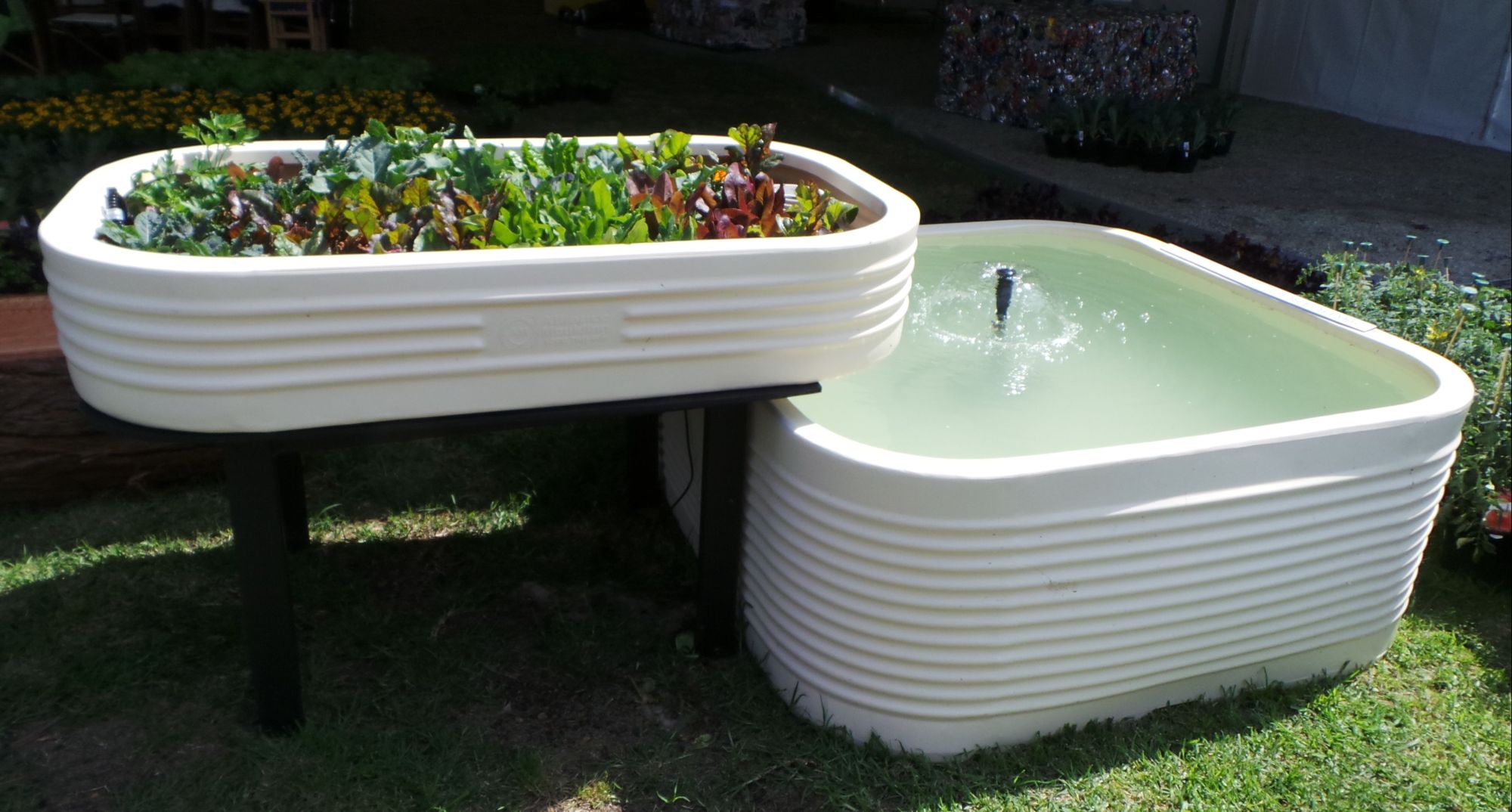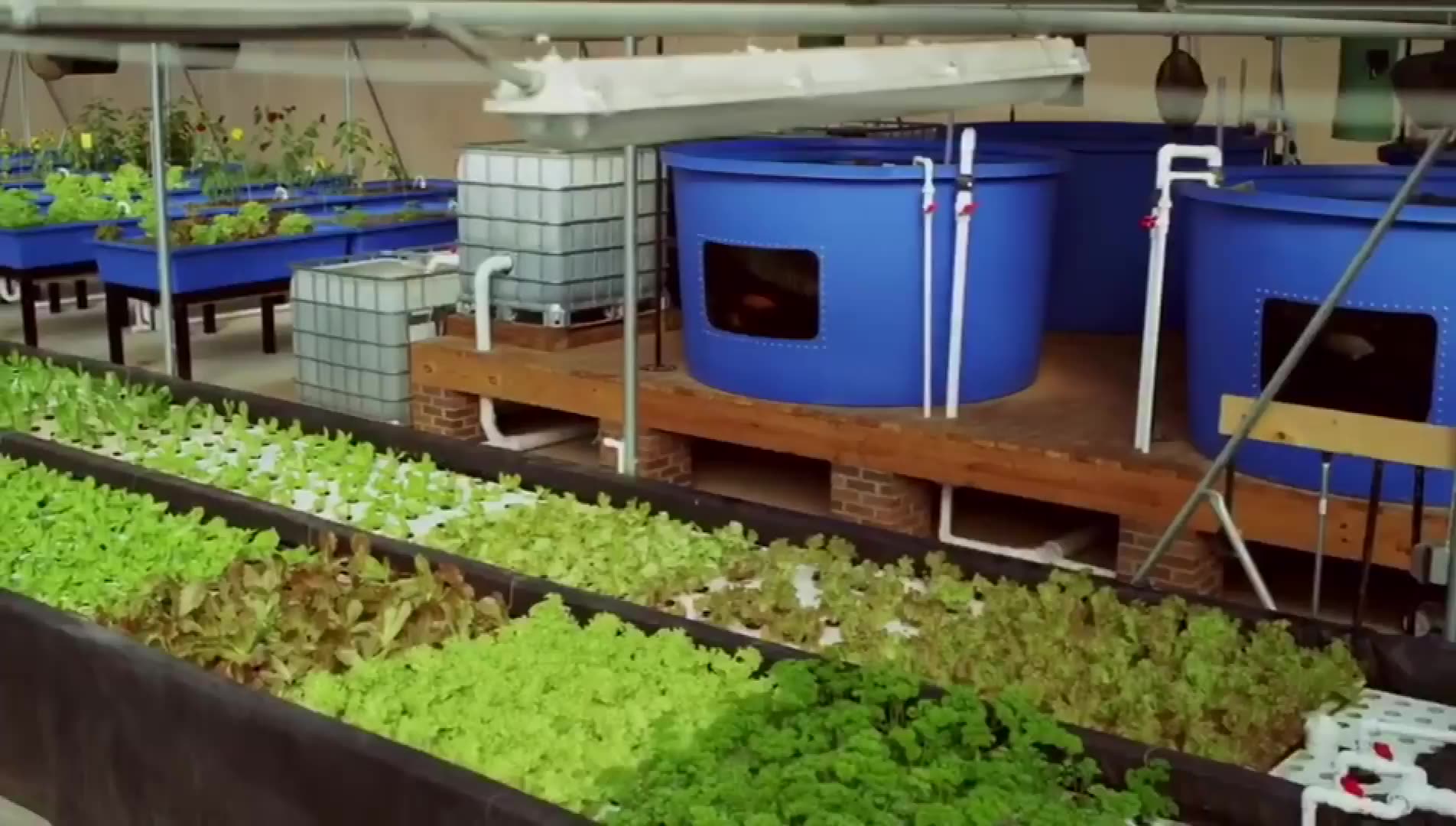Welcome to the fascinating world of home aquaponics systems for sale, where you’ll discover the perfect solution for eco-conscious individuals seeking fresh, healthy produce while minimizing environmental impact. Immerse yourself in this comprehensive guide as we delve into the benefits, components, and intricacies of these remarkable systems.
From selecting the ideal fish and plants to mastering maintenance and troubleshooting techniques, we’ll empower you with the knowledge and confidence to establish a thriving home aquaponics system. Join us on this journey of sustainable living and reap the rewards of nature’s bounty.
Home Aquaponics Systems Overview

Home aquaponics systems are a combination of aquaculture (fish farming) and hydroponics (growing plants in water). In an aquaponics system, the water from the fish tank is used to fertilize the plants, and the plants help to clean the water for the fish.
This creates a closed-loop system that can produce both food and water.
Home aquaponics systems can be a great way to grow your own food and reduce your environmental impact. However, there are also some limitations to consider before getting started.
Benefits of Home Aquaponics Systems
- Can produce both food and water.
- Uses less water than traditional gardening.
- Can be used to grow a variety of plants.
- Can help to reduce your environmental impact.
Limitations of Home Aquaponics Systems
- Can be expensive to set up.
- Requires some maintenance.
- Can be difficult to control the water quality.
- Not suitable for all climates.
Types of Home Aquaponics Systems
There are many different types of home aquaponics systems available. The most common type is the media-based system, which uses a growing medium such as gravel or clay pebbles to support the plants. Other types of systems include nutrient film technique (NFT) systems, deep water culture (DWC) systems, and aeroponic systems.
Components of Home Aquaponics Systems
Home aquaponics systems are composed of several essential components that work together to create a symbiotic relationship between fish and plants. Understanding the function of each component is crucial for designing and maintaining a successful system.
The main components of a home aquaponics system include:
- Fish tank
- Grow bed
- Water pump
- Filter
- Aeration system
Fish Tank
The fish tank is the home of the fish in the aquaponics system. It provides a controlled environment for the fish to live and thrive. The size of the fish tank will depend on the number of fish you plan to keep.
The water in the fish tank should be kept at a consistent temperature and pH level. The fish tank should also be equipped with a filter to remove waste and debris from the water.
Grow Bed
The grow bed is where the plants are grown in the aquaponics system. The grow bed can be made from a variety of materials, such as PVC pipe, wood, or plastic. The grow bed should be filled with a growing medium, such as gravel, clay pebbles, or expanded clay.
The water from the fish tank is pumped into the grow bed, where it provides nutrients for the plants. The plants then filter the water, removing waste products and returning clean water to the fish tank.
Water Pump
The water pump is responsible for circulating the water between the fish tank and the grow bed. The water pump should be sized appropriately for the size of the system.
Filter
The filter is responsible for removing waste products from the water. The filter should be sized appropriately for the size of the system.
Aeration System, Home aquaponics systems for sale
The aeration system is responsible for providing oxygen to the water. The aeration system can be a simple air pump or a more complex system, such as a venturi injector.
Fish Selection for Home Aquaponics Systems

Factors to Consider When Selecting Fish
Choosing the right fish species for your home aquaponics system is crucial for its success. Consider the following factors:
- Compatibility:Select fish species that are compatible with each other and with the plants you plan to grow.
- Water Quality:Choose fish that can tolerate the specific water quality conditions of your system, including temperature, pH, and dissolved oxygen levels.
- Size:Consider the size of the fish and the size of your system. Overcrowding can lead to poor water quality and fish health issues.
- Feeding:Choose fish that have similar feeding habits and nutritional requirements.
- Disease Resistance:Opt for fish species that are known to be relatively disease-resistant.
Suitable Fish Species for Home Aquaponics Systems
Here are some suitable fish species for home aquaponics systems:
- Tilapia:Tolerant of a wide range of water conditions and known for their fast growth.
- Goldfish:Hardy and can tolerate slightly cooler temperatures.
- Catfish:Omnivorous and can help keep the system clean by consuming waste.
- Guppies:Small and prolific breeders, making them suitable for smaller systems.
- Betta Fish:Known for their vibrant colors and can tolerate a wide range of water conditions.
Maintaining Optimal Water Quality for Fish Health
Maintaining optimal water quality is essential for fish health and the overall success of your aquaponics system. Regularly monitor water parameters such as pH, temperature, dissolved oxygen, and ammonia levels.
- pH:Most fish prefer a pH range between 6.5 and 7.5.
- Temperature:Ideal temperatures vary depending on the fish species, but most prefer a range between 75°F and 85°F (24°C to 29°C).
- Dissolved Oxygen:Fish require a minimum of 5 ppm dissolved oxygen in the water.
- Ammonia:Ammonia is toxic to fish and should be kept below 0.5 ppm.
Regular water changes, aeration, and a well-established biological filter are essential for maintaining optimal water quality in your aquaponics system.
Plant Selection for Home Aquaponics Systems: Home Aquaponics Systems For Sale
Selecting suitable plants for your home aquaponics system is crucial to ensure a thriving ecosystem. Consider the following factors:
Factors to Consider:
- Nutrient requirements:Plants in aquaponics rely on nutrients from fish waste, so choose species with moderate to high nutrient demands.
- Growth rate:Fast-growing plants will utilize nutrients quickly, helping to balance the system.
- Root system:Plants with fibrous or shallow roots are ideal for aquaponics, as they can easily absorb nutrients from the water.
- Disease resistance:Choose plants that are resistant to common diseases in aquaponics, such as root rot and fungal infections.
Suitable Plant Species
Here is a list of suitable plant species for home aquaponics systems:
- Leafy greens:Lettuce, spinach, kale, Swiss chard
- Herbs:Basil, cilantro, parsley, mint
- Fruits:Strawberries, tomatoes, cucumbers
- Vegetables:Peppers, beans, carrots, radishes
Companion Planting and Crop Rotation
Companion planting and crop rotation are important practices in aquaponics:
- Companion planting:Planting compatible species together can improve growth and yield. For example, basil can deter insects from tomatoes, while carrots can improve the flavor of onions.
- Crop rotation:Rotating different plant species in the same bed over time helps prevent soil-borne diseases and maintain soil health.
Design Considerations for Home Aquaponics Systems

Designing a home aquaponics system requires careful consideration of several key factors to ensure its functionality and effectiveness. These considerations include system sizing, water flow, filtration, lighting, and temperature control, all of which play crucial roles in maintaining a healthy and productive ecosystem for both fish and plants.
System Sizing
The size of your home aquaponics system will depend on the space available, the number of fish you want to keep, and the types of plants you intend to grow. It’s important to strike a balance between having a system that is large enough to support the fish and plants while being manageable in terms of maintenance and space requirements.
Water Flow
Adequate water flow is essential for maintaining water quality and providing oxygen to the fish. The flow rate should be sufficient to prevent water stagnation and remove waste products from the system. The use of pumps, filters, and piping can help achieve the desired water flow.
Filtration
Filtration is crucial for removing solid waste and impurities from the water, which helps maintain water quality and prevent disease outbreaks. There are various types of filtration systems available, such as mechanical filters, biological filters, and chemical filters. Choosing the right combination of filtration methods will ensure effective water treatment.
Lighting
Proper lighting is essential for plant growth in aquaponics systems. The type and intensity of lighting will depend on the specific plants being grown. Natural sunlight can be utilized if the system is placed in a suitable location, but artificial lighting may be necessary to supplement or extend the duration of available light.
Temperature Control
Temperature control is important for both fish and plants, as they have specific temperature ranges within which they thrive. The temperature of the water should be monitored and adjusted as needed using heaters or chillers to maintain optimal conditions for the organisms in the system.
For those considering home aquaponics systems for sale, it’s crucial to understand the importance of lighting. For optimal plant growth, Hydroponics LED Lights: A Comprehensive Guide for Optimal Plant Growth provides valuable insights into the benefits of LED lighting, including its energy efficiency, spectrum customization, and durability.
This knowledge will empower you to make informed decisions when choosing lighting solutions for your home aquaponics system.
Maintenance and Troubleshooting for Home Aquaponics Systems
Maintaining a healthy and productive home aquaponics system requires regular maintenance and troubleshooting. Here are some essential tasks and tips to ensure your system runs smoothly.
Routine Maintenance Tasks
- Monitor water quality regularly, including pH, ammonia, nitrite, and nitrate levels.
- Change a portion of the water in the system every few weeks to remove excess nutrients and waste.
- Clean the grow beds or media regularly to prevent clogging and ensure proper water flow.
- Inspect the fish and plants for signs of disease or stress, and take appropriate action.
- Check the equipment, such as pumps, filters, and lighting, for proper operation and maintenance.
Common Problems and Troubleshooting
Here are some common problems that may occur in home aquaponics systems and how to troubleshoot them:
- Cloudy water:This can be caused by bacterial growth or excessive organic matter. Check the water quality and perform a water change if necessary.
- Algae growth:Algae can be controlled by reducing light exposure, increasing water flow, and adding algae-eating organisms.
- Fish disease:Identify the specific disease and treat it accordingly. Maintain good water quality and avoid overstocking.
- Plant nutrient deficiencies:Observe the plant’s symptoms and adjust the nutrient levels in the water accordingly.
- Equipment failure:Check the equipment regularly and replace or repair any malfunctioning parts.
Importance of Regular Water Testing and Monitoring
Regular water testing is crucial for maintaining a healthy aquaponics system. Monitor the following parameters:
- pH:Optimal pH range for most aquaponics systems is 6.5-7.5.
- Ammonia:Ammonia is toxic to fish and should be kept below 1 ppm.
- Nitrite:Nitrite is also toxic to fish and should be kept below 0.5 ppm.
- Nitrate:Nitrate is the end product of the nitrogen cycle and is beneficial for plants.
Benefits of Home Aquaponics Systems
Home aquaponics systems offer a multitude of benefits, ranging from environmental sustainability to economic savings and educational opportunities. Embracing home aquaponics is not just about growing food; it’s about creating a self-sustaining ecosystem that benefits both you and the environment.
Environmental Benefits
Home aquaponics systems are inherently eco-friendly. They:
- Conserve Water:Aquaponics systems recycle water, eliminating the need for excessive watering. The water used to sustain the fish provides nutrients for the plants, which in turn filter the water for the fish.
- Reduce Chemical Use:Aquaponics systems eliminate the need for chemical fertilizers and pesticides. The fish waste provides natural nutrients for the plants, while the plants filter out impurities from the water.
- Promote Biodiversity:Home aquaponics systems create a diverse ecosystem that supports a variety of plant and fish species. This biodiversity enhances the overall health and resilience of the system.
Economic Benefits
Home aquaponics systems can provide significant economic savings:
- Grow Your Own Food:Growing your own food in an aquaponics system significantly reduces grocery expenses. You can produce fresh, healthy produce all year round.
- Save on Water Bills:Aquaponics systems conserve water, leading to lower water bills.
- Reduce Environmental Costs:By eliminating chemical fertilizers and pesticides, home aquaponics systems reduce the environmental impact and associated costs.
Educational Value
Home aquaponics systems are valuable educational tools for families and students:
- Learn about Ecosystems:Aquaponics systems demonstrate the interconnectedness of living organisms and the principles of ecology.
- Foster Science Skills:Monitoring water quality, fish health, and plant growth provides hands-on experience in science and observation.
- Promote Sustainability:Home aquaponics systems teach the importance of sustainable practices and environmental stewardship.
End of Discussion
As you embark on your home aquaponics adventure, remember that the benefits extend far beyond nourishing your family with wholesome food. These systems promote environmental stewardship, reduce waste, and offer a unique educational experience. Embrace the joy of cultivating your own sustainable ecosystem and savor the satisfaction of bringing fresh, organic produce to your table.
Questions and Answers
What are the primary advantages of home aquaponics systems?
Home aquaponics systems offer numerous advantages, including reduced water consumption, increased food production, elimination of chemical fertilizers and pesticides, and the promotion of a healthier lifestyle.
How do I choose the right fish for my home aquaponics system?
When selecting fish for your system, consider factors such as compatibility with your chosen plants, tolerance to water quality fluctuations, and ease of care. Popular choices include tilapia, catfish, and goldfish.
What are the essential components of a home aquaponics system?
A home aquaponics system typically comprises a fish tank, grow beds, a water pump, and a filtration system. Each component plays a crucial role in maintaining a healthy environment for both fish and plants.
How often should I test the water in my home aquaponics system?
Regular water testing is essential for monitoring water quality and ensuring the well-being of your fish and plants. Aim to test the water every 1-2 weeks, checking for pH levels, ammonia, nitrite, and nitrate concentrations.
